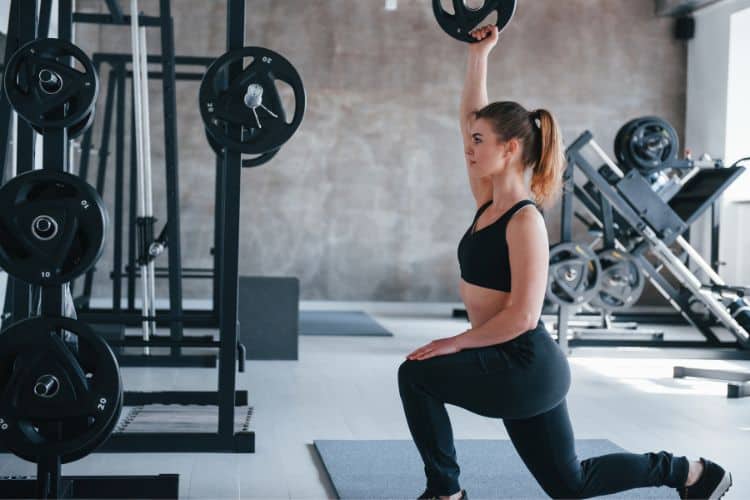Sign up for workout ideas, training advice, reviews of the latest gear and more.






In today’s fast-paced world, carving out time for long gym sessions isn’t always possible. But that doesn’t mean you have to sacrifice your fitness goals. 20-minute free weights workouts offer a powerful, time-efficient solution to build strength, boost metabolism, and improve overall fitness—all without complicated equipment or hours spent exercising.
Free weights, such as dumbbells, kettlebells, and barbells, offer functional, versatile training that targets multiple muscle groups. This blog post dives into the benefits of 20-minute free weights workouts, key training principles, equipment you’ll need, and multiple workout templates for fat loss, muscle gain, and total-body conditioning.
Free weights challenge your muscles through a full range of motion, engaging stabilizer muscles and promoting real-world strength. In just 20 minutes, you can complete a full-body routine that supports hypertrophy, cardiovascular health, and fat loss.
Thanks to the afterburn effect (also known as excess post-exercise oxygen consumption or EPOC), your body continues to burn calories even after a short, intense session. Combining compound movements and minimal rest increases heart rate and metabolism.
Whether you’re at home with a pair of dumbbells or using kettlebells at the gym, free weights are adaptable to nearly any environment. With just one or two pieces of equipment, you can train every major muscle group.
Free weights require balance and coordination, engaging your core and stabilizer muscles more than machines do. This leads to better posture, enhanced athleticism, and injury prevention.
Before starting your 20-minute free weights workouts, here’s what you’ll need:
Choose weights that challenge you but allow you to maintain proper form throughout the workout.
For a well-rounded and effective workout, use these training principles:
These exercises target multiple muscle groups and are the most efficient. Examples: squats, lunges, presses, rows.
Combining exercises with little to no rest increases calorie burn and workout density.
Instead of reps, try timed sets (e.g., 40 seconds of work, 20 seconds rest) to keep the intensity high.
Start every session with a quick warm-up to increase circulation and reduce the risk of injury.
Warm-up routine (repeat for 3 minutes):
5 exercises | 4 rounds | 40 seconds work / 20 seconds rest
1. Goblet Squat
Hold a dumbbell or kettlebell close to your chest and perform deep squats. Targets legs and core.
2. Bent-Over Row
With two dumbbells, hinge at the hips and row the weights toward your ribcage. Works back and biceps.
3. Push Press
Perform a slight dip then press the weights overhead. Builds shoulder strength and power.
4. Romanian Deadlifts
Hold the dumbbells in front of your thighs, lower them to mid-shin while keeping your back straight, then return to standing. Hits hamstrings and glutes.
5. Renegade Row
Start in a plank with a dumbbell in each hand. Row one arm at a time while keeping your core stable. Engages back, arms, and core.
Rest 1 minute between rounds. Cool down and stretch for 2-3 minutes.
Superset pairs | 3 sets per superset | 30 seconds rest between sets
A
B
C
Finish with 1 minute of plank and arm stretches.
Tri-sets | 3 rounds | 45 seconds on / 15 seconds rest
1. Dumbbell Front Squat
Hold weights at shoulder height. Keep your chest up and knees tracking forward.
2. Reverse Lunges
Alternate legs while holding dumbbells at your sides. Great for glutes and quads.
3. Dumbbell Glute Bridge
Place a dumbbell on your hips, squeeze glutes, and lift.
Rest 1 minute between rounds. Cool down with hip flexor stretches and hamstring stretches.
EMOM (Every Minute on the Minute) for 20 minutes
Perform the reps as fast as you can within the minute. Use the rest of the minute to recover.
Minute 1:
15 Dumbbell Thrusters (squat to overhead press)
2:
12 Dumbbell Snatches (6 each arm)
3:
10 Dumbbell Push-Up Rows (5 each side)
4:
15 Dumbbell Swings (like a kettlebell swing)
5:
Rest or hold a plank
Repeat the 5-minute circuit 4 times.
Tabata (20 seconds work, 10 seconds rest x 8 rounds per pair)
Pair 1:
Pair 2:
Finisher:
1-minute farmer’s carry or overhead hold to challenge your core and grip.
Quality always beats quantity. Use a mirror or record yourself to ensure good posture and technique.
If your form breaks down before time is up, lighten the load. If you’re breezing through the sets, go heavier.
20 minutes a few times a week adds up. Aim for at least 3–5 sessions weekly depending on your goals.
Mix in walking, jogging, or stretching on your off days for a well-rounded fitness plan.
These workouts are ideal for:
Yes—especially if you’re consistent, progressively increasing weights, and using compound movements.
Both are excellent. Dumbbells are more common and versatile, while kettlebells offer fluid movement-based strength. Use what’s available.
Increase the weight, reduce rest times, or add sets. You can also stack two 20-minute circuits together for a longer session.
Short on time doesn’t mean short on results. With the right structure and effort, 20-minute free weights workouts can deliver full-body strength, improved endurance, and noticeable physique changes. The key is to stay consistent, challenge yourself, and make each minute of movement count.
Whether you’re training at home or in the gym, this time-efficient approach helps you fit fitness into any lifestyle. Grab your dumbbells, set your timer, and let the gains begin—one powerful minute at a time.
Ready to get stronger in less time? Bookmark this guide and start your 20-minute free weights workouts today!
Want more effective workouts?
Subscribe to our blog or follow us on Pinterest for new routines, challenges, and fitness tips!
Stay up to date on the latest women’s health, fitness and lifestyle trends and tips.